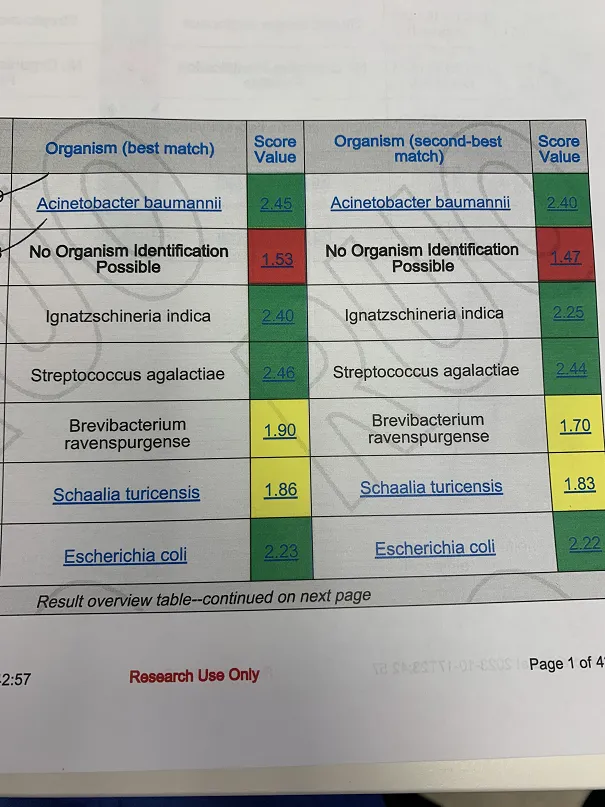Weeks ago, I came across this report from our MALDI-TOF instrument. The name Ignatzschineria indica stood out.

I have never heard of this organism before. It always fascinates me when I learn about new organisms on the job. Even after nine years, I continue to increase my knowledge base. The patient had a diabetic foot ulcer, so I wasn't surprised to see uncommon germs in their culture. I did some digging and found the following results from Brave:

From the summaries, it looked like the bacteria came from maggots. We can assume that the patient had either neglected the ulcer or couldn't afford (or does not have insurance) care (I say this based on the patient's demographic). Scientists first isolated I. indica in India based on available records.
According to some sources, this bacteria is difficult to isolate. Foot wounds are generally messy, so I was lucky to have picked out these colonies. The first cases appeared in the US in 2014 if we were to believe the reports from the University of Louisville Hospital.
How difficult is it to treat this particular infection? Not too hard. Based on one case study, beta-lactam antibiotics work well. Of course, in more severe cases, amputation may be used to stop the necrosis, which is not uncommon among diabetic patients. The study further confirms that most reported cases are from people of lower socioeconomic class. However, there exist resistant variants whose resistance mechanisms are not yet understood. That's evolution for you. Unfortunately, I did not have the opportunity to check out the patient's antibiotic susceptibility result.
Here is extra information: the larvae used in maggot therapy shouldn't carry this germ as the gut content doesn't spill out on the patient. I would be surprised if the patient caught it from the treatment if they had received it.